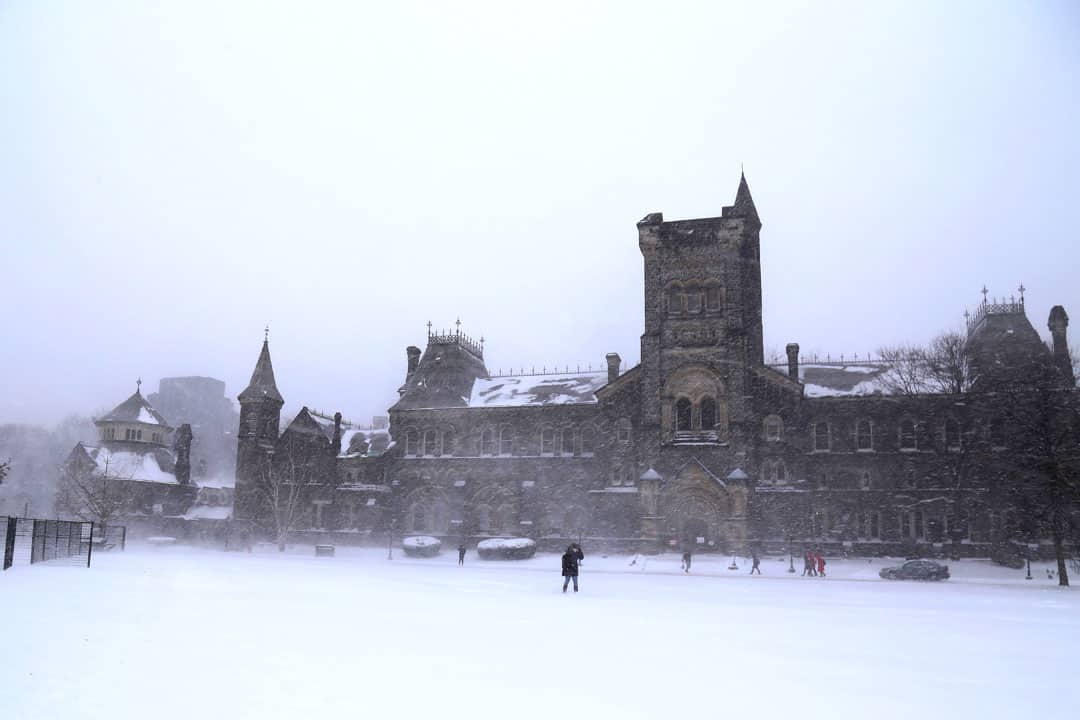Winters in Toronto have been growing warmer and less snowy over the years.
University of Toronto researchers Dr. Micah Hewer and Professor William Gough have confirmed your suspicions by analyzing precipitation patterns in downtown Toronto over a period of 169 years, finding that snowfall has been decreasing at a rate of 0.26 milimetres per year. Due to this decrease, winters that were once mostly snowfall have instead become dominated by rain.
For this new study published in the journal Atmosphere, Hewer and Gough retrieved historical data on rainfall, snowfall water equivalent, and total precipitation from 1849–2017.
Originally, 61.5 per cent of total winter precipitation fell as snow. “But now, the percentage of total precipitation that falls as snow is less than 50 per cent,” said Hewer in an interview with The Varsity. “So really, if you think about it [from] a lived experience, we are experiencing rainy winters, not snowy winters.”
Winter precipitation downtown has shifted from predominantly snow to mostly rain
Hewer and Gough also characterized precipitation phase changes by classifying days throughout the 169 years as either a snowy day, a rainy day, or a dry day. “So now we’re not so much concerned about volume, we’re just concerned about frequency,” Hewer explained of this second metric. Not surprisingly, they found that the number of snowy days decreased from 80.9 per cent of precipitation days to 67.4 per cent.
However, while increasing in number, rainy days are still less common. “If we’re going to experience [a winter] day with precipitation, it’s more likely to be a day with snow than it is to be a day with rain,” Hewer said. “But it doesn’t contradict the other findings that we’re experiencing.”
Hewer explained that snow days produced low-volume events such as flurries, while winter storms were more likely on rain days: “When it rains, it pours.”
Thirty years ago, a winter storm in downtown Toronto would have resulted in “considerable efforts to clear the roads and a snowpack that would have lasted for a week,” according to Hewer — a far cry from today’s January thunderstorms that water the now year-round grass.
This stark contrast within just three decades confirms that decreased snowfall is observable in one’s lifetime. “Really, what we’re seeing is a transition period. And we’ve lived through that transition period [that we’ve] experienced as humans, and we can remember these snowy winters but we don’t see them anymore,” said Hewer.
Rising temperatures in the city
Hewer and Gough investigated whether increasing temperatures have a role in Toronto’s disappearing snow. First, they confirmed that winters in Toronto are in fact warming, changing from an average of -5.0 degrees Celsius in 1849 to -2.1 degrees Celsius in 2017.
They also found that the last 50 years is “when the rate of that observable change in temperature has been the most exponential,” which may explain why some people today claim that their childhood winters were different.
Comparing these trends to their findings on snow and rainfall, they confirmed that warming explained “between 40–50 per cent of the observed variability that we saw in the precipitation phase.”
Having found a causal relationship, Hewer and Gough were able to characterize the temperature thresholds that correlate with a change from majority snow to rain. Their finding was consistent with what they had previously discovered: when average maximum winter temperatures exceed 0.5 degrees Celsius, less than half of the winter’s precipitation is likely to fall as snow. Currently, winters hover at around 0.9 degrees Celsius.
But why does temperature only account for around half of the observed precipitation changes? Hewer said that this is not surprising. “There’s so many other factors in the climate system, from local features [like] lake ice and lake temperature, to global features like oscillation patterns, and so forth.” Further studies would be necessary to confirm which other factors are involved.
In the future, Hewer said he wants to expand this study geographically to other parts of the GTA and beyond. Perhaps other areas will continue to live up to our cold and snowy reputation, but Canada’s largest city appears to be headed in a different direction.
Making sense of where we were and where we are going, Hewer said that the Toronto of winters past resembled snowy Montréal, but may soon become another Vancouver. “[Those] frequent days with light flurries that we’re experiencing eventually are going to become frequent days with light rain.”


